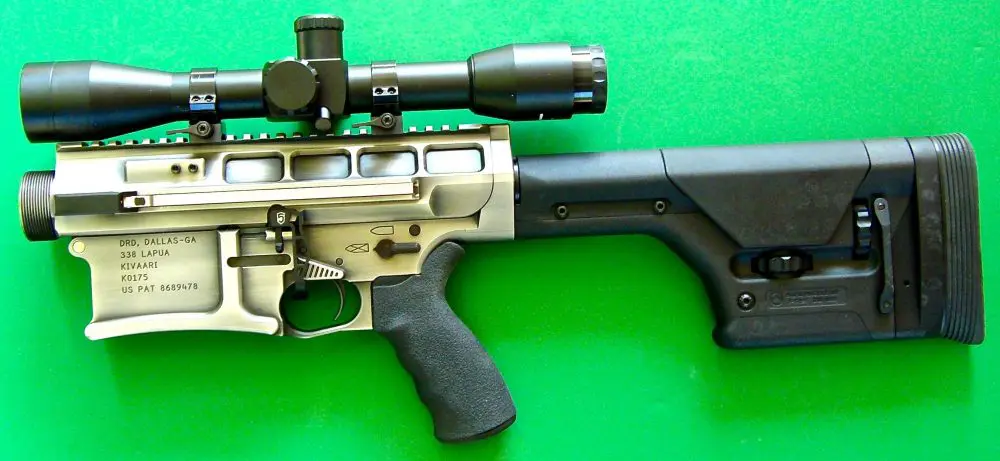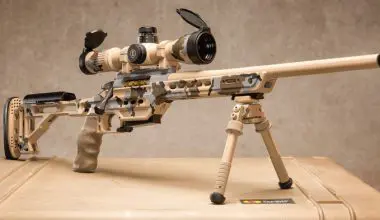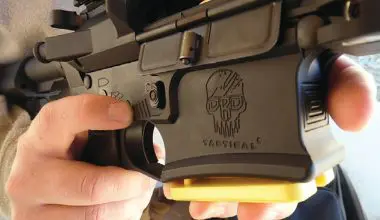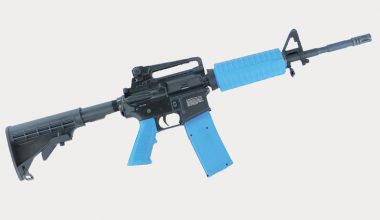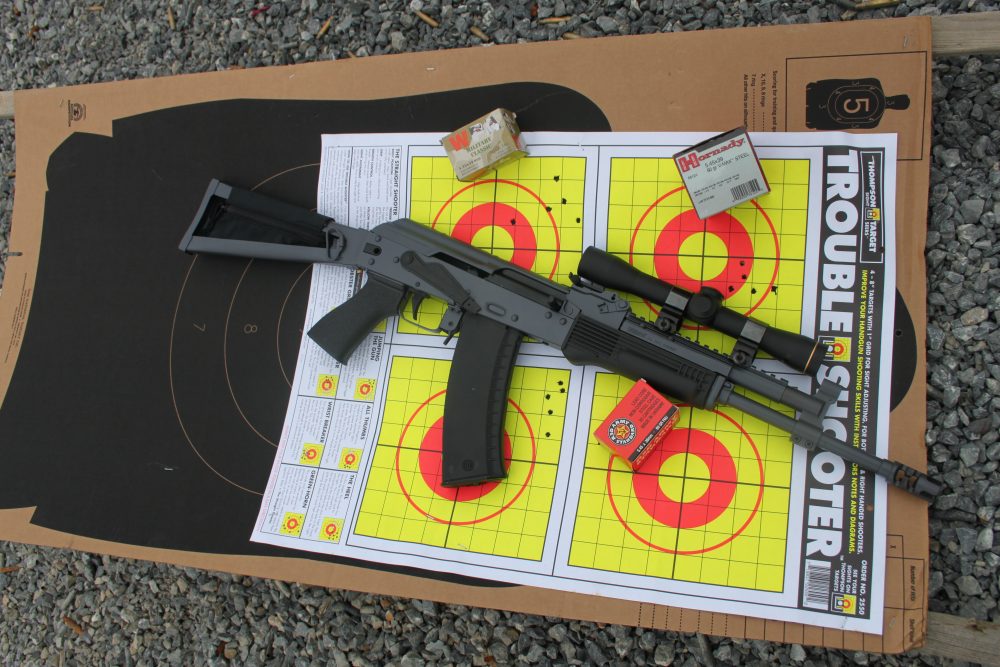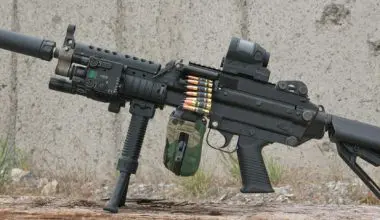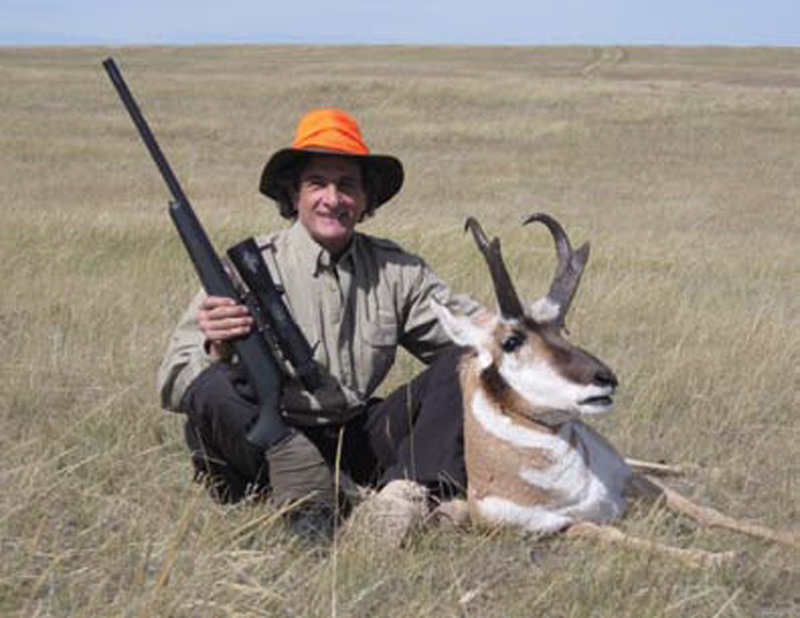
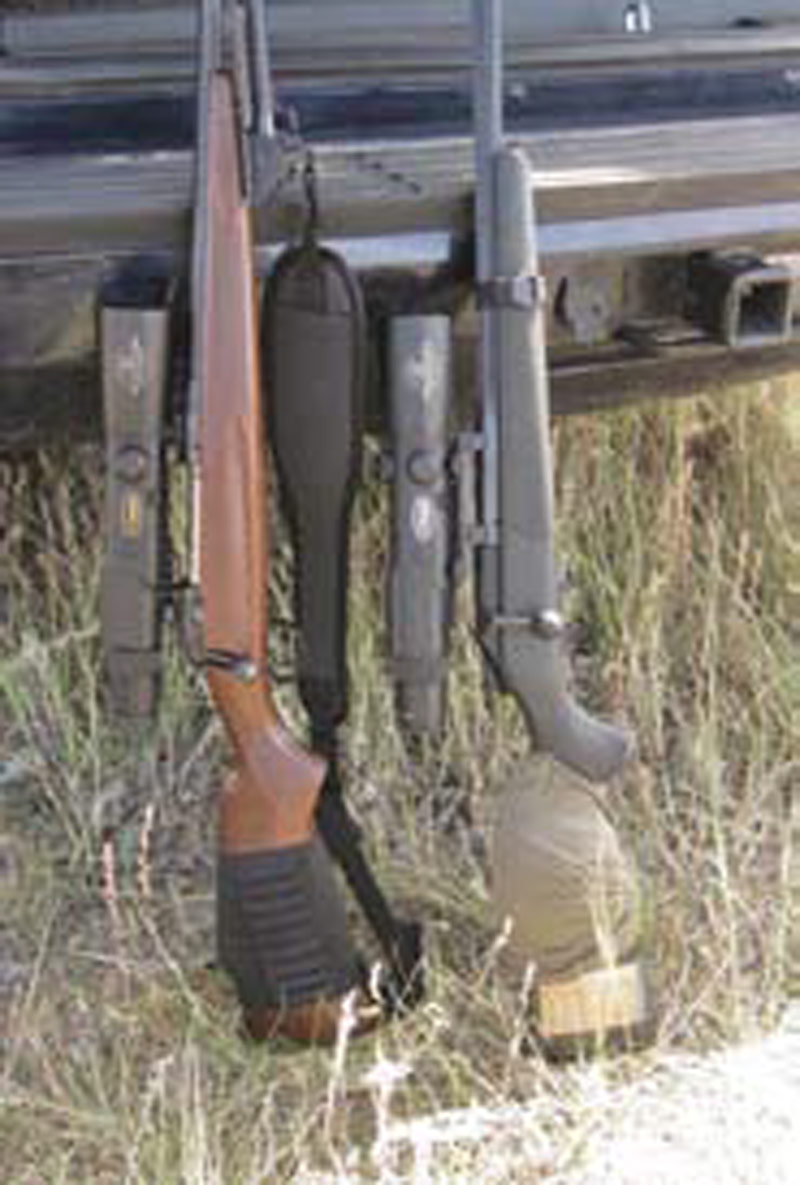
I am not hard to talk into such things, and the fact that we would get to play with the Burris Eliminator LaserScope made the event worth fitting into my tight fall schedule between other hunting and shooting-related commitments.
To start things off, Rich had a 4-12X Eliminator LaserScope sent my way and followed up by sending a heavy barreled .308 Blaser for use as our test mule. This Blaser was a good choice because it is a proven sub-MOA rifle with the Black Hills 168-grain TSX load we had on hand. Rich also had a spare quick-detach Picatinny rail for it.
The reason it might not have been the best choice was scope mounting height.
The quick-detach rail on the Blaser is a true Picatinny and therefore has the .615-inch wide base below the 45 degree locating flats that continues a minimum of .367 inch down from the top surface of the mount. This Picatinny adapter, while tall on the Blaser, was intended to be used with the adjustable comb stock that is not on this rifle. No getting out of it, the Eliminator on the Blaser offered very poor cheeking.
Table of Contents
PROGRAMMING THE ELIMINATOR
On the way out to Denver to pick up Rich, I stopped at the super-secret north Texas S.W.A.T. range for my first experiences with the Eliminator. From actually reading the instructions, I determined that getting it programmed for our exact load would/should be simple and, to my surprise, it was.
Being a sharp-stick-and-a-club kind of guy, most electro/computer stuff gets on my nerves. The Burris folks have done a great job of making this thing electronically user friendly. First off, I picked a program number from their charts. For the Black Hills 168-grain TSX load, the number was 263. The 2 is for a 200 yard sight-in, and the 63 for an additional 63 inches of drop at 500 yards. To put the 263 in the Eliminator, just follow the instructions carefully. I had to read it a few times—but then, I can’t make my phone or TV work—and I finally “got-er-done.”
After an exact sight-in (early morning, dead still) at precisely 200 yards, I moved to exactly 500 yards as measured by the laser in the Eliminator. When you laser a target, a red dot appears on the vertical crosshair at the correct elevation, and the range appears in yards in the top of the view. If the laser fails to range, then four red dots appear, signifying correct elevation for your load at 300, 400, 500 and 600 yards. The yardage reading is line of sight, and the red dot is correct for your load figuring yardage and up/down angles.
At 500 yards, I fired ten very careful shots so I would have a better chance of determining best center of group. Upon arriving at the target, I was pleased to find the group centered, roundish and just a hair over five inches extreme spread.
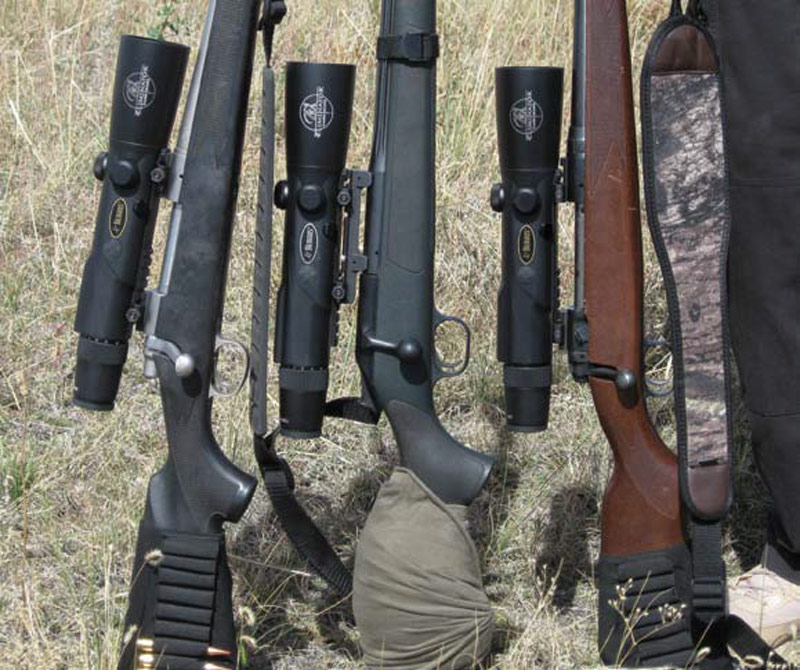
It was great, but I was disappointed because I almost wanted to need a correction. If the group had been, for example, three inches high, I could have fine tuned it by reprogramming the Eliminator with the number 260 to designate the 200-yard zero and only 60 inches of drop at 500, but the Burris chart was exactly on in this case with 263, and I had no reason to “fine tune” 500 yards. But I could have! (Wasted good luck, if you ask me.)
So sighted, that evening with no wind I decided to run the targets from the camp bench. At the Texas range, we have swinging steel targets suitable for high-powered rifles at 100, 220, 360, 420, and 640 yards that are eight, eight, nine, 11, and 14 inches in diameter. I just lasered them, put the red dot on them, and shot them five for five all the way to 640, all near-center hits. I couldn’t have been more pleased.
JOINING THE PARTY
The next morning, I shoved off early to pick up Rich at the Denver airport and then we drove to Greeley, Colorado to meet with Dennis Phillips, Marketing Manager at Burris. Dennis showed us around the Burris facility and then we headed out to their range so Rich could confirm the zero on the Blaser and check out the Eliminator.
Rich quickly determined he wasn’t happy about the large distance between the comb and line of sight. He wrapped a bunch of “stuff’ around the comb to build it up and swore that we would fix it that evening. After the comb adjustment, Rich proceeded to have his way with the steel out to the range’s 500- yard limit.
Happy with how the Eliminator, Blaser and Black Hills ammo were working together, we were off to Cheyenne, Wyoming.
After dinner, it was “custom comb” time. At the Wal-Mart Supercenter, we bought some easily stackable feminine hygiene products and duct tape. Back at the hotel room, we stacked and taped and checked until we had a secure cheek piece of the proper height and fragrance. Rich topped it off with a Recon Wrap ‘cause he’s such a stylin’ ‘n’ profilin’ kinda guy.
THE ANTELOPE THAT GOT AWAY
The next morning found us out among the pronghorn not far west of Cheyenne. There were quite a few antelope and, while we didn’t see any showstoppers, there were some respectable heads— and of course they will all eat. We didn’t know it, but it was going to be a trying morning.
As Rich, Dennis and I slipped along just below a ridge line less than a mile from the truck, a good enough buck came out of a draw following a couple of does 600 or 700 yards in front of us. Rich crept closer while Dennis and I held back to observe. At about 150 yards, Rich took the shot from sitting.
All three of us thought the antelope that went over the edge with the two does was lung shot but would go down any second. By the time this particular pronghorn plus harem of two topped out on a hillside about three quarters of a mile away, he had nearly but not quite made believers of us.
There was the off chance that Rich’s antelope had fallen dead in one of the draws out of our sight and another previously out of sight critter about the same size had taken its place. (Don’t laugh— Rich and I had that exact thing happen with a hog in Texas some years back.) We searched those draws to make sure, but it wasn’t to be. He had just missed an easy shot—one in which he was solid and all was good except maybe a failure to concentrate all the way through because it was an “easy shot.”
ANOTHER CANDIDATE
We looked for more antelope and then met up with the Burris crew at the truck. While eating lunch, another suitable antelope was spotted. Dennis and Rich went after it as we looked on from half a mile away. The wind had kicked up and was mean and very unpredictable as it came out of the draws. Rich took his shot from a solid position at about 300 yards and didn’t hold enough wind. Damn, they can run fast! Rich told me he had a solid hold and held the wind he had been advised to hold at and still it looked like he should have held at least another foot and a half of wind.
Unlike the ranch country we normally hunt, these virtually smooth rolling hills let the surface wind just howl. Interesting lessons were learned here. As the first afternoon was drawing to a close, we spotted the best antelope of the day nearly a mile away. There weren’t many roads, but our guide thought a particular road might take us on the other side of the ridge that this antelope was on, so away we went. Ten minutes later, to our surprise, the antelope walked into view.
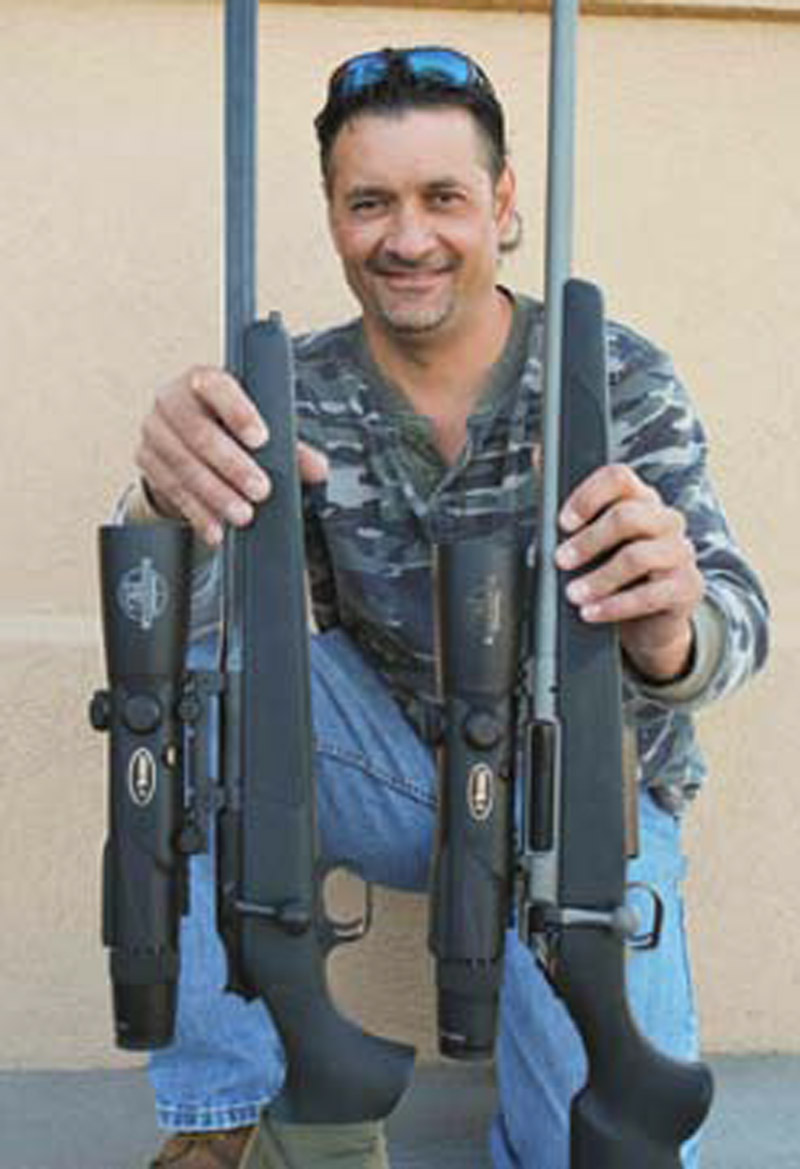
Rich got out of the truck and took a shooting position waiting for it to stop, and it did, facing Rich just inside of 150 yards. The antelope dropped at the shot and didn’t twitch. I’m sure it was bittersweet for Rich, as he was surely still irritated by the first shot of the morning. Within an hour we had the carcass at the processor in Cheyenne, and the next morning the head was at a taxidermist in Fort Collins, Colorado.
ETHICAL GAME SHOOTING
As for the Eliminator and its part in the hunt, I have mixed feelings.
First off, if you have a rifle sighted for a modern cartridge at 200 yards, you can use a dead-on hold out to around 230 yards on virtually any game animal and easily be in the vitals. This encompasses the vast majority of truly ethical game shooting.
On the other hand, there are times when the air is still and the intended target is standing in the open (easy to keep an eye on) or in snow (easy tracking and the ability to find where he was standing) or any of a multitude of factors that stack up in our favor to make an attempt to kill reasonable. If you add these conditions to a skilled shooter with an accurate rifle and a solid shooting position, longer shots become more ethical.
Now, if you throw in a way to accurately range the intended target and a knowledge of exact bullet impact at that specific range, I could see myself taking the shot, under these ideal conditions, on a game animal out past even 500 yards.
The usefulness of rock blasting (or targets, jack rabbits, whatever) at all ranges and in all conditions is invaluable to the would-be long-range game shooter and teaches the shooter who is honest with himself what he can—and cannot—do, especially in the wind. Shooting like this, you will find that if you have a solid position, accurate rifle, and qualifying skill level, most of the time the biggest remaining issues are exact range, actual bullet drop at that range, and wind effect.
Laser rangefinders and accurate trajectory and wind deflection tables take care of the first two and help with the third. The Burris Eliminator handily solves the first two and, by giving actual range, improves your educated guess on wind effect.
ELIMINATOR EVALUATION
If you could have this technology without a downside, it would be a no-brainer. YMMV—for some, the Eliminator’s price tag of $900 (at least that’s what my local Cabela’s sells it for) might be a downside or an outright no-go. For me, the major downsides have to do with line of sight height above bore and the unit’s weight (26 ounces).
If mounted on a conventional bolt gun (e.g., M70, 700), it will end up having a line of sight just over 1.900 above centerline of bore. To cheek this correctly, it requires a rather high comb that most stocks do not offer. Additionally, the weight is carried high and makes it feel heavier than it is because of the balance. (Note: The Thompson Center Icon and rifles like it may allow a very slightly lower mounting because of an integral scope base.)
While a heavy, high line of sight scope plus its necessary high-comb stock is unacceptable to me on a general-purpose hunting rifle, there are times when I’m using a rifle where the weight isn’t a bad thing and the action type allows mounting at a happier comb relationship.
I am thinking ahead to when I have an Eliminator mounted on one or two of my DPMS LRs (the two in question are 24-inch heavy barrels in .308 and .243). They are already too big, heavy and awkward (the .308 is SureFire suppressed) to lug around, but very accurate. And being flat-top ARs, they have a multitude of mounting options.
The resultant high (approximately 2.5 inches) line of sight versus the approximately two-inch dimensions used in Burris’ calculations is not as big a deal as one might suspect. A few minutes with my RCBS external ballistic calculator shows that you have to get out well past 500 yards before it makes an inch of difference.
If you want a laser rangefinder in your scope, the Burris Eliminator represents a good buy. The red dot showing exact elevation for your load at an exact range seals the deal. The Eliminator is state-of-the-art at a reasonable price.
